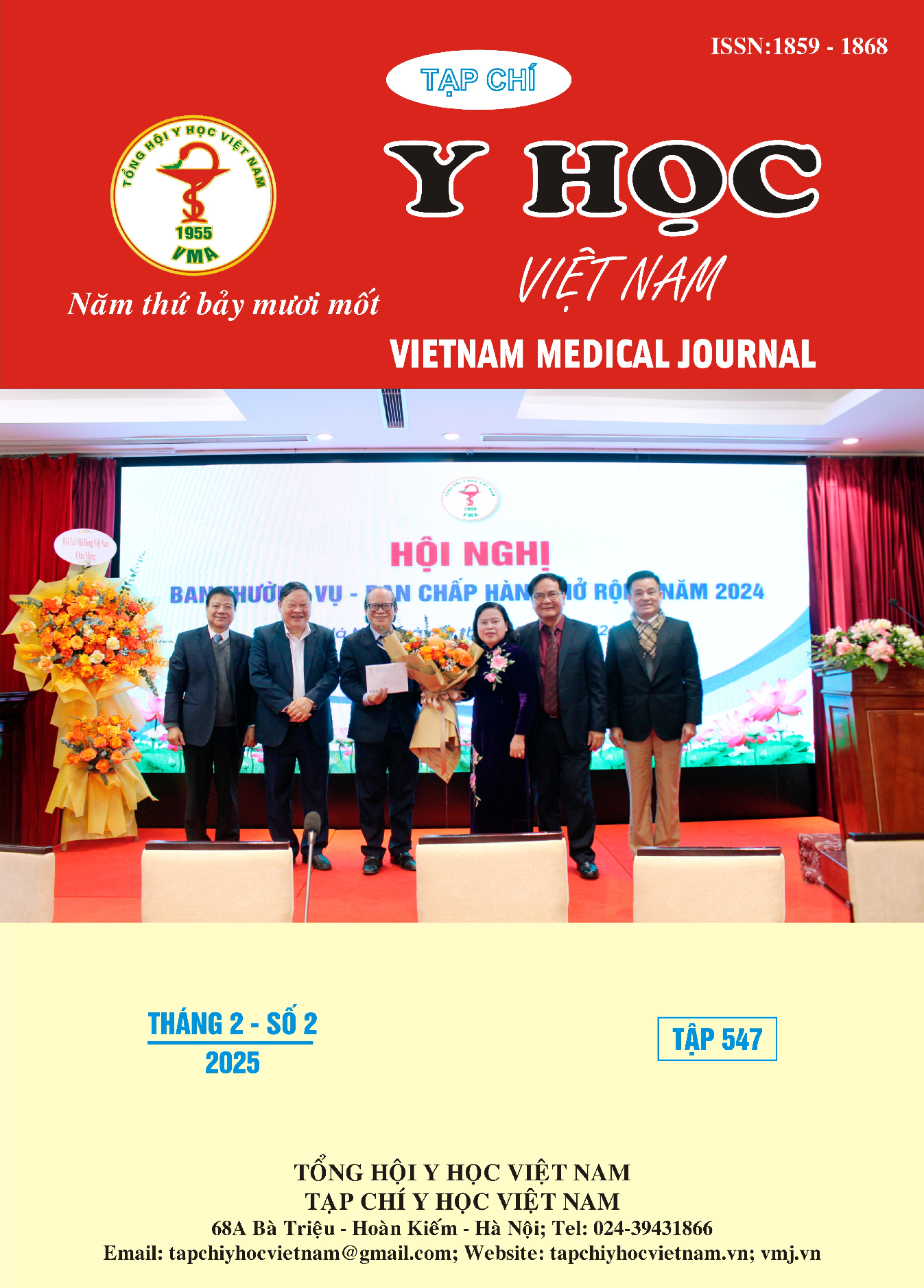SURGICAL OUTCOMES OF THE B-DYN DYNAMIC INTERNAL FIXATION SYSTEM IN THE TREATMENT OF SINGLE LEVEL LUMBAR SPINAL STENOSIS AT VIET DUC UNIVERSITY HOSPITAL
Main Article Content
Abstract
Objective: To investigate the short-term therapeutic efficacy of the B-Dyn dynamic internal fixation system for the treatment of single level lumbar spinal stenosis diseases. Subject and method: 35 single level lumbar spinal stenosis disease patients who underwent posterior lumbar decompression and single-segment B-Dyn dynamic internal fixation at Spinal Surgery Department- Viet Duc University Hospital between Mar 2022 and Mar 2023 were retrospectively analyzed. The preoperative and one month, 3-months, and 12-month postoperative visual analog scale (VAS) pain scores, and Oswestry Disability Index (ODI) scores were observed and recorded to assess the clinical therapeutic effect; the lumbar range of motion (ROM) was measured preoperatively and at the last follow-up to evaluate the preservation of movement function in the dynamically stabilized segment. Result: All patients underwent the operation successfully without complications during hospitalization and were followed with an average of 12 months. The patients' preoperative and post-operative, and last follow-up, VAS of low back pain and legs pain were 6.1 ± 0.9 and 6.7 ± 0.8, 2.3 ± 0.9 and 1.9 ± 0.8, 1.4 ± 0.7 and 1.1 ± 0.7, respectively. The differences had statistical significance when compared between pre-operative with post-operative and last follow-up (p<0.05). The preoperative ODI score (44.6 ± 3.2) was decreased to 13.8 ± 2.1 at post-operative, the difference was statistically significant (p<0.05). The patients' preoperative lumbar ROM and the ROM at last follow-up were 3.5 ± 1.9 and 3.1 ± 1.5, respectively; the difference was not statistically significant (p=0.057). Conclusion: The treatment of single level lumbar spinal stenosis diseases with the B-Dyn dynamic internal fixation system can effectively relieve pain, improve quality of life, and preserve the lumbar ROM of the stabilized segment.
Article Details
Keywords
Lumbar spinal stenosis, dynamic internal fixation system, range of motion, B-Dyn device.
References
2. Nakashima H, Kawakami N, Tsuji T et al (2015). Adjacent segment disease after posterior lumbar interbody fusion: Based on cases with a minimum of 10 years of follow-up. Spine (Phila Pa 1976) 40: 831-841.
3. Qian J, Bao Z, Li X et al (2016). Short-term therapeutic efficacy of the isobar TTL Dynamic internal fixation system for the treatment of lumbar degenerative disc diseases. Pain Physician 19: 853-861.
4. Fairbank JC, Pynsent PB (2000). The Oswestry Disability Index. Spine (Phila Pa 1976) 25:2940-2952.
5. Markwalder T-M, Wenger M (2002). Adjacent- segment morbidity. J Neurosurg 96: 139-140.
6. Park P, Garton HJ, Gala VC et al (2004). Adjacent segment disease after lumbar or lumbosacral fusion: review of the literature. Spine (Phila Pa 1976) 29: 1938-1944.
7. Highsmith JM, Tumialán LM, Rodts GEJ (2007). Flexible rods and the case for dynamic stabilization. Neurosurg Focus 22: 11.
8. Urrutia J, Besa P, Campos M et al (2016). The Pfirrmann classification of lumbar intervertebral disc degeneration: An independent inter- and intra- observer agreement assessment. Eur Spine J 25: 2728-2733.
9. Li Z, Li F, Yu S et al (2013). Two-year follow-up results of the Isobar TTL Semi-Rigid Rod System for the treatment of lumbar degenerative disease. J Clin Neurosci 20: 394-399.
10. Hrabálek L, Wanek T, Adamus M (2011). Treatment of degenerative spondylolisthesis of the lumbosacral spine by decompression and dynamic transpedicular stabilisation. Acta Chir Orthop Traumatol Cech78: 431-436.


